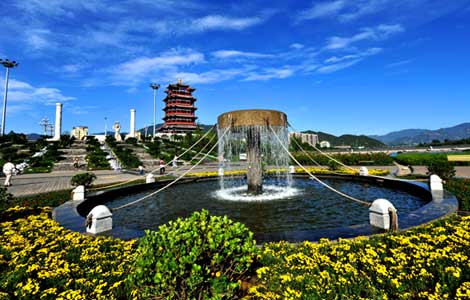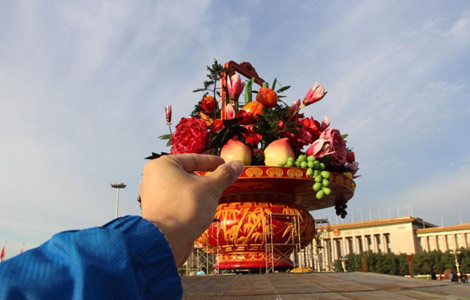China unveils its first and unnamed moon rover
Updated: 2013-09-25 21:03
(Xinhua)
|
||||||||
BEIJING - Chinese scientists described the country's first moon rover on Wednesday and invited the global public to come up with a name for it.
Zhao Xiaojin, director of the aerospace department of the China Aerospace Science and Technology Corporation, depicted the lunar rover an orbiter adaptable to harsh environments; a highly efficient and integrated robot; and a high altitude "patrolman" carrying the dreams of Asia.
The Chang'e-3 mission to moon, named after a Chinese lunar goddess, will take place in December, when a Chinese spacecraft will soft-land on a celestial body for the first time.
The rover has two wings, stands on six wheels, weighs 140 kg and will be powered by solar energy.
"When it arrives in lunar orbit on board a lander, the rover will choose the best landing site and gently touch down the moon's surface, using optical and microwave sensors to avoid rocks and craters," Zhao said.
The rover will "select the best route, use minimal fuel and make the smallest possible error" during landing and is capable of hovering to steer clear of obstacles, he said.
Domestic and overseas compatriots can submit their proposed names for the rover through the Internet and the official name will be announced in November after an online poll on the selected proposals.
Li Benzheng, deputy chief designer of China's lunar probe program, said the name of the rover should express the wishes of Chinese at home and abroad, feature the modern and national traits to inspire people.
Li noted the rover will recognize obstacles on the moon's surface, and plot a path of least resistance by a combination of onboard navigation systems and remote control from the command center.
The rover can "rest", automatically entering a dormant state to recharge its batteries, and return to work after a while, Li said.
It can endure a vacuum, intense radiation and extremes of temperature. Temperatures on the moon's surface can range from minus 180 to plus 150 degrees Celsius, said Wu Weiren, the program's chief designer.
The rover is equipped with numerous detectors and information gathering systems such as a panoramic camera and radar measurement devices. The rover will patrol the Earth's natural satellite for about three months.
The data collected by the rover, such as 3D images, infrared spectrums and lunar soil analysis, will directly and accurately lead to greater understanding of the moon..
China launched Chang'e-1 in 2007 and Chang'e-2 in 2010. The first probe collected a large body of data and a completed map of the moon. The second mission greatly enhanced the resolution of the previous map and generated a high-definition image of Sinus Iridium, a plain of basaltic lava, considered by lunar observers to be one of the satellite's most beautiful features.
The Chang'e-3 moon probe is part of the second stage of China's three-stage lunar mission, orbiting, landing, and analyzing lunar soil and stone samples.

 World leaders at UN General Assembly
World leaders at UN General Assembly
 Plastic surgery can be beauty killers
Plastic surgery can be beauty killers
 In photos: Deadly earthquake in Pakistan
In photos: Deadly earthquake in Pakistan
 China to inaugurate Shanghai FTZ on Sept 29
China to inaugurate Shanghai FTZ on Sept 29
 China's investment a 'job-saver' in Europe
China's investment a 'job-saver' in Europe
 Pollution control plan to slash PM2.5
Pollution control plan to slash PM2.5
 The beauty and beasts of selling hot houses
The beauty and beasts of selling hot houses
 Tian'anmen's flowery moments for National Day
Tian'anmen's flowery moments for National Day
Most Viewed
Editor's Picks

|

|

|

|

|

|
Today's Top News
208 killed in SW Pakistan earthquake
Foreign Minister Wang makes the rounds at UN
China to surpass US as top trader
Smithfield voters approve deal
Trending news across China
Ultra wealthy population shrinks in China: report
White House to enroll millions in Obamacare
Brazilian president blasts US for spying
US Weekly

|

|




